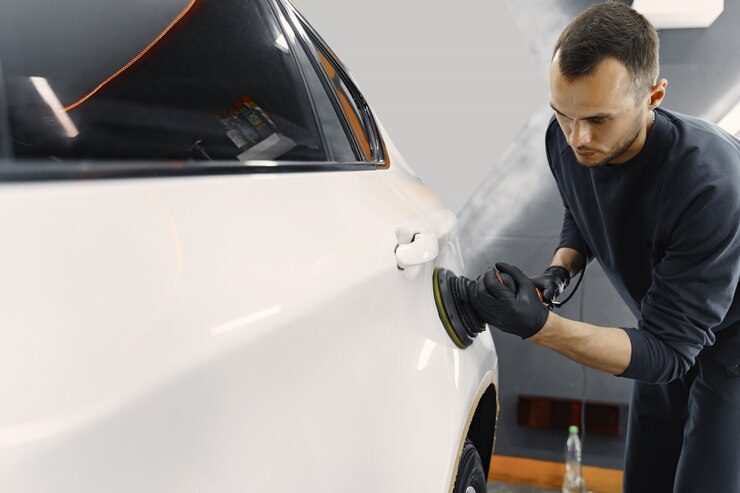

Window tinting is the process of applying a dark film to the surface of a vehicle’s windows to reduce the amount of sunlight and heat that enters the interior. This technique has become increasingly popular in the automotive industry, both for aesthetic and practical reasons. There are several different window tinting techniques in use today, each with its own advantages and disadvantages.
- Dyed Window Tinting: This is the most common and affordable type of window tinting. The film is made by applying a layer of dye to the surface of a clear polyester film. The tint is then cut to size and applied to the window using an adhesive. The advantage of this technique is that it provides an even, uniform tint across the entire surface of the window. The main disadvantage is that the dye can fade over time, especially if exposed to direct sunlight.
- Metalized Window Tinting: This type of window tinting uses a film that is coated with tiny metal particles to provide a reflective surface. The metal particles are designed to reflect the sun’s heat, thus reducing the amount of heat that enters the vehicle. The advantage of this technique is that it provides excellent heat rejection, but the main disadvantage is that the metal particles can interfere with electronic signals, such as cell phone signals and GPS.
- Carbon Window Tinting: This type of window tinting uses a film that is made from carbon particles. The film is designed to be very durable and resistant to fading, peeling, and bubbling. Carbon window tinting provides excellent heat rejection and is ideal for use on larger windows, such as windshields and sunroofs. The main disadvantage of this technique is that it can be more expensive than other types of window tinting.
- Ceramic Window Tinting: This type of window tinting uses a film that is made from ceramic particles. The ceramic particles are designed to provide excellent heat rejection, while also allowing visible light to pass through the window. This type of window tinting is ideal for use on larger windows, such as windshields and sunroofs. The main disadvantage of this technique is that it can be more expensive than other types of window tinting.
In conclusion, window tinting is an important technique in the automotive industry that provides many benefits, including improved privacy, reduced heat and glare, and increased comfort. With so many different window tinting techniques available, it is important to choose the one that best meets your needs and budget. Whether you are looking for an affordable, easy-to-apply tint or one that provides maximum heat rejection, there is a window tinting technique to meet your needs.

